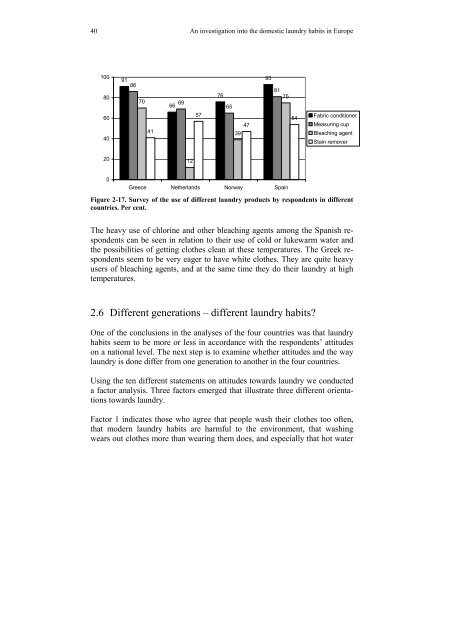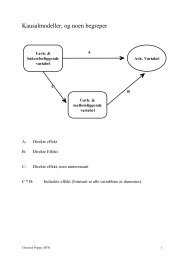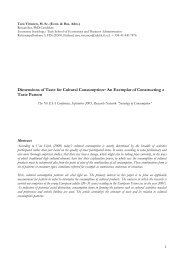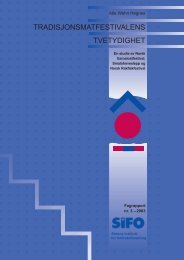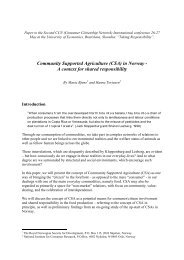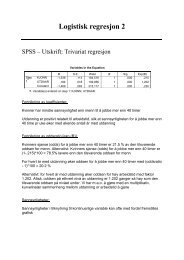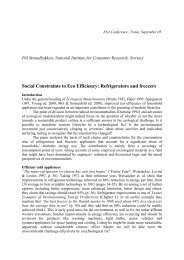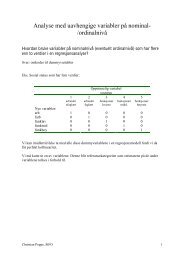an investigation of domestic laundry in europe - habits ... - SIFO
an investigation of domestic laundry in europe - habits ... - SIFO
an investigation of domestic laundry in europe - habits ... - SIFO
You also want an ePaper? Increase the reach of your titles
YUMPU automatically turns print PDFs into web optimized ePapers that Google loves.
40An <strong><strong>in</strong>vestigation</strong> <strong>in</strong>to the <strong>domestic</strong> <strong>laundry</strong> <strong>habits</strong> <strong>in</strong> Europe100806040918670416966577665473993817554Fabric conditionerMeasur<strong>in</strong>g cupBleach<strong>in</strong>g agentSta<strong>in</strong> remover20120Greece Netherl<strong>an</strong>ds Norway Spa<strong>in</strong>Figure 2-17. Survey <strong>of</strong> the use <strong>of</strong> different <strong>laundry</strong> products by respondents <strong>in</strong> differentcountries. Per cent.The heavy use <strong>of</strong> chlor<strong>in</strong>e <strong>an</strong>d other bleach<strong>in</strong>g agents among the Sp<strong>an</strong>ish respondentsc<strong>an</strong> be seen <strong>in</strong> relation to their use <strong>of</strong> cold or lukewarm water <strong>an</strong>dthe possibilities <strong>of</strong> gett<strong>in</strong>g clothes cle<strong>an</strong> at these temperatures. The Greek respondentsseem to be very eager to have white clothes. They are quite heavyusers <strong>of</strong> bleach<strong>in</strong>g agents, <strong>an</strong>d at the same time they do their <strong>laundry</strong> at hightemperatures.2.6 Different generations – different <strong>laundry</strong> <strong>habits</strong>?One <strong>of</strong> the conclusions <strong>in</strong> the <strong>an</strong>alyses <strong>of</strong> the four countries was that <strong>laundry</strong><strong>habits</strong> seem to be more or less <strong>in</strong> accord<strong>an</strong>ce with the respondents’ attitudeson a national level. The next step is to exam<strong>in</strong>e whether attitudes <strong>an</strong>d the way<strong>laundry</strong> is done differ from one generation to <strong>an</strong>other <strong>in</strong> the four countries.Us<strong>in</strong>g the ten different statements on attitudes towards <strong>laundry</strong> we conducteda factor <strong>an</strong>alysis. Three factors emerged that illustrate three different orientationstowards <strong>laundry</strong>.Factor 1 <strong>in</strong>dicates those who agree that people wash their clothes too <strong>of</strong>ten,that modern <strong>laundry</strong> <strong>habits</strong> are harmful to the environment, that wash<strong>in</strong>gwears out clothes more th<strong>an</strong> wear<strong>in</strong>g them does, <strong>an</strong>d especially that hot water


